A residential or commercial backup generator can turn a lengthy blackout into little more than an inconvenience; the lights stay on, the sump pump keeps working, and vital medical devices remain powered. That sense of security is comforting in the moment, but it only materializes if the machine is ready to perform. On the first outage of the season, owners who delay maintenance often discover that their lifeline refuses to start. Routine inspections, fluid changes, and minor repairs performed ahead of time translate directly into reliability when seconds count. Even the casual user who fires up the unit once a year will benefit; peace of mind rarely costs more than a few hours in the garage.
How Often Should You Perform Generator Maintenance?
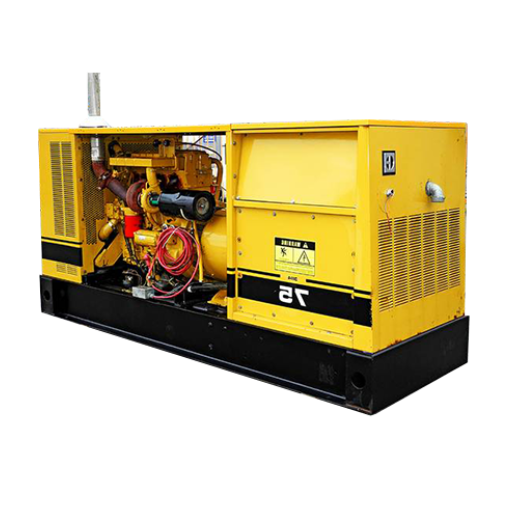
The manufacturers generally advise a once-per-cycle check-up, roughly every twelve months, regardless of running hours. For machines pressed into service weekly or monthly, the schedule tightens- I have seen suggested milestones of 100 to 200 hours of operation, a range spelled out in the owner’s handbook. Standard chores include topping off oil and coolant, scrutinizing belts and hoses for cracks, and placing a simulated load on the generator to validate voltage output under stress. No owner, however experienced, should chisel these intervals in stone; the original factory manual remains the final arbiter.
Why Do Standby Generators Require Regular Maintenance?
Standby generators sit unused for most of their lives yet must spring to action immediately, a paradox that makes routine maintenance non-negotiable. Experts estimate that, with diligent upkeep, these machines can serve anywhere from 10 to 30 years, but neglect can condense that lifespan to a fraction of a decade. When owners defer service, corroded batteries, clogged fuel lines, and worn engine seals are familiar problems.
Changing the oil and filters at prescribed intervals keeps journal bearings lubricated and prevents sludge from turning the crankcase into a foam pit. Seasonal battery inspections catch weak cells before they quit and spare users the embarrassment of an empty starter. A Generac survey pinpoints batteries as the root cause in roughly 70 percent of emergency failures, underscoring how inexpensive checks can avert costly disappointments. Diesel users face a different menace; stale fuel can generate algae and sludge within six months, so polishing the tank or cleaning the injector rail returns the flow and preserves combustion chemistry.
Routine testing while the system is under load provides the earliest possible glimpse of hidden problems in the transfer switch, the alternator, and several other crucial components. A weekly exercise cycle keeps standby generators limber by letting them run for a few minutes, yet that short spin never takes the place of a thorough service checklist. Owners who ignore regular upkeep often face repair bills that far exceed the cost of a disciplined maintenance contract. The price of routine inspection fades quickly when weighed against the chaos of an outage.
Professional maintenance plans, or simple adherence to clearly posted manufacturer intervals, nearly always call for an annual tune-up or a check every couple of hundred hours, whichever comes first. As household power demands keep creeping upward and climate surprises show no sign of slowing, keeping a standby generator in fighting trim has shifted from prudent to essential for residences and commercial operations. Consistency in care, in short, is the best hedge against uncertainty.
What Are the Recommended Intervals for Generator Maintenance?
Most manufacturers land on a 6- to 12-month schedule, though specific practices can vary depending on the engine style, environmental exposures, and site workload. An owner working through those recommended checks buys peace of mind, and that peace often outlasts the brief engine noise that accompanies routine service.
How Can Routine Maintenance Extend the Life of Your Generator?
|
Key Point |
Description |
|---|---|
|
Regular Oil Changes |
Prevents friction and overheating of engine parts. |
|
Fuel System Maintenance |
Ensures clean fuel flow and prevents blockages. |
|
Battery Inspections |
Avoids corrosion and ensures reliable starts. |
|
Cooling System Checks |
Prevents overheating and mechanical failures. |
|
Air Filter Replacement |
Ensures clean air intake for efficient operation. |
|
Load Bank Testing |
Verifies performance under operational conditions. |
|
Proper Placement |
Keeps generator safe from environmental damage. |
|
Routine Visual Inspections |
Identifies wear, damage, or leaks early. |
|
High-Quality Fluids |
Reduces wear and prevents system contamination. |
|
Scheduled Professional Service |
Detects and resolves issues with expert diagnostics. |
What is Included in a Comprehensive Standby Generator Maintenance Checklist?
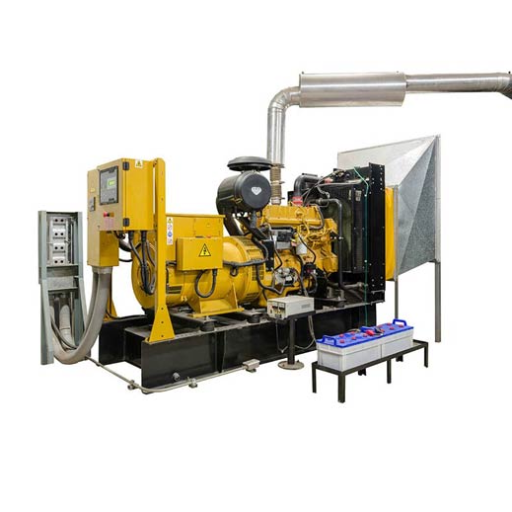
Standby generators demand a careful eye, so most maintenance plans open with a straightforward fuel check. Swing by the tank, top it off, and look for any signs-gel, water, or weird floaters-that hint the diesel or propane has gone bad.
- Next, operators slide the dipstick to gauge engine oil. If the shade sits anywhere near the add mark-or worse, below it-a quick top-off or full change keeps the pump from scavenging.
- Battery health, though often ignored, sneaks into many checklists. A room-temperature charge, tight clamps, and a quick scrub of any white powder keep cranking power predictable.
- Coolant follows close behind. Inspect the overflow tank, trace the rubber hoses, and flag any seepage before it turns the engine bay into a mess.
- Drive belts and flexible lines ask for no more than a one-minute Tglance. Fraying edges or looseness cry out for adjustment or replacement, plain and simple.
- The technician flips the generator’s switches. A smooth roar under full load speaks louder than any paper log ever could.
- Filters riding the air intake deserve similar respect, especially under the fine dust clouds that sneak past idle weeks. A shot of compressed air or a swap keeps combustion efficient.
- Electrical terminals- those metal eyes- warn when corrosion creeps in. Snug contact and a wipe with dielectric grease keep voltage steady.
- Control panels finish the round. Volts, amps, and idle hour counters should sit within their happy zones; anything out of line earns a closer look.
- Once every reading checks out, a quick sweep removes dust and grass clippings, the silent enemies of cooling airflow. Clean equipment lasts longer and costs less to babysit.
Routine attention to these particulars proves cheaper than emergency repairs and guarantees the lights stay on when storms rewrite the day.
How do you inspect the spark plug and air filter?
I always start a spark-plug check by pulling the lead off the terminal. You cannot be too careful with electricity. A sturdy ratchet or a plug socket then loosens the inspection plug. The porcelain should be uncracked, the electrodes even, and the threads free of carbon dust; cleanup or an immediate swap follows. The air filter lives in a plastic box nearby, which usually snaps or latches open with modest effort.
Once freed, I hold the media up to the light and assess whether dirt is stuck or permanently embedded. If the fibers stay bright after light brushing, I can reinstall the filter; a brown weave signals that a fresh element is in order. That afternoon ritual keeps the little engine breathing freely and doing its work without fuss.
What Are the Steps to Change the Oil and Oil Filter?
|
Step |
Description |
|---|---|
|
Gather Equipment |
Collect oil, filter, wrench, funnel, and drain pan. |
|
Warm Up Oil |
Run the engine for 5 minutes to heat the oil. |
|
Disconnect the Spark Plug |
Prevent accidental starts during the process. |
|
Drain Old Oil |
Remove the drain plug and let the oil flow into a pan. |
|
Replace Oil Filter |
Remove the old filter, lubricate it, and install a new one. |
|
Add New Oil |
Use a funnel to pour oil to the recommended level. |
|
Reconnect Spark Plug |
Reattach the spark plug wire securely. |
|
Check for Leaks |
Start the engine briefly and inspect for leaks. |
|
Dispose of Oil Properly |
Follow local regulations for oil disposal. |
How to Perform an Exhaust System Check?
A generator exhaust-system check is indispensable for routine maintenance; it guards crew safety and machine reliability. Technicians often note that cutting corners in this single task can invite larger headaches down the line.
- Start with a Visual Walk-Around
Exhaust tubing, the muffler shell, and every flange-bolt joint should be scanned for cracks, pinholes, or the mottled grey-orange of advanced rust. Even a hairline fissure opens a path for toxic fumes, so nothing is too small to miss.
- Trust Your Ears
When the engine settles into speed, lean in and listen. A sudden thump, persistent rattle, or unexplained hiss whispers that clamps may be loose or exhaust-weld seams are failing.
- Search for Proof of Leaks
Black soot trails, damp streaks, or the acrid bite of unburned gas reveal a breach. Since signature carbon monoxide has no color or odor, the visual and tactile clues must do the heavy lifting.
- Confirm Exhaust Clearance
Stack-pipe routing must carry fumes clear of walkways, control rooms, or any confined enclosure. Quietly accumulating gas can turn an ordinary error into an emergency, and prevention is always cheaper than treatment.
- Verify Heat Shield Integrity
Inspect the protective heat shield encircling the exhaust assembly. Signs of cracking, warping, or outright absence expose adjacent components to excessive thermal stress.
Frequent examination of the exhaust pathway safeguards the generator’s durability and the broader safety of the work site.
How to Troubleshoot Common Backup Generator Issues?
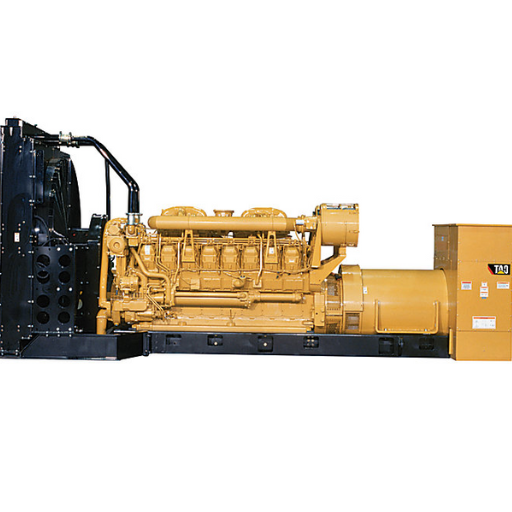
- Generator Won’t Start
- Start with the fuel gauge. A nearly-empty tank is the simplest explanation. Fill up and try again.
- Next, eye the battery. Loose clips or a drained cell can cut the current before it leaves the casing.
- If the engine only clicks, the starter motor deserves a look. A worn Bendix or weak solenoid may be the culprit.
- Generator Runs Rough or Stalls
- An obstructed air filter can throttle the engine even at full throttle. A quick clean or swap usually restores proper breathing.
- Conversely, Spark plugs can glaze or gunk after a season of service. Fresh electrodes often smooth out uneven combustion.
- Power Output Issues
- Trace every cable. Fraying insulation or a forgotten ground can siphon off voltage meant for the rotor.
- Confirm the load is within spec. Exceeding the rated wattage invites tripped breakers and surging heat.
- Unusual Noises or Vibrations
- Mounting anything less than snug bolts will invite a shimmy you can hear fifty feet away. Tighten in a diagonal pattern to restore balance.
- Loose debris caught in the cooling fins can grind away at aluminum parts. A swift look underneath usually pays dividends.
- Overheating
- RADIATOR coolant may drop after a long run. To prevent scale buildup, top off only with the correct mixture.
- Blocked louvers starve the engine of oxygen: clear leaves, dust, and loose plastic to widen the breathing space.
Should every DIY avenue exhaust itself, calling a seasoned technician is the wisest course of action. Unchecked faults can escalate well beyond repair.
What Causes a Generator to Fail During an Outage?
Generators sometimes falter when the power grid drops out, and the reasons are rarely straightforward. Mechanics, the surrounding climate, and routine servicing all contribute to the machine’s resilience. A quick inventory of frequent culprits shows how easily systems can go offline.
The electric battery sits at the top of the list, even though it is often the part we ignore. Age, corrosion at the terminals, and simple discharge leave the starter in the dark when its moment arrives. Research indicates that roughly four of every five emergency failures occur because the battery can no longer deliver a spark.
The fuel supply chain is another weak link, yet issues here strike silently. Water, rust, or stale gasoline create a sludge that clogs lines and filters long before the owner notices. Surveys suggest that nearly half of all breakdowns can be traced back to these silent fuel maladies. Regular tank cleaning, on-site polishing, and chemical stabilizers are proven defenses against that hidden risk.
Periodic servicing keeps the rotating parts of a generator in working order. When technicians pass on the usual inspection, minor problems, such as a frayed belt or a loose terminal, can swell into catastrophic failure. Field data collected by the International Council on Large Electric Systems in early 2022 found that machines receiving no scheduled upkeep break down nearly twice as often as their routinely checked counterparts.
How Do You Detect and Fix Fuel Tank Problems?
|
Problem |
Detection Method |
Fix |
|---|---|---|
|
Corrosion and Rust |
Inspect for rust, leaks, or a metallic smell. |
Use rust inhibitors, clean, or replace tank. |
|
Fuel Contamination |
Check for water, dirt, or sludge in fuel. |
Clean tank, use additives, and seal properly. |
|
Fuel Leaks |
Look for visible leaks or fuel smell. |
Locate leaks, tighten connections, or replace parts. |
|
Clogged Fuel Lines |
Notice engine sputtering or power loss. |
Clean lines, replace filters, and use additives. |
|
Fuel Pump Issues |
Listen for whining noise or engine stalling. |
Test pressure, replace the pump if faulty. |
|
Overfilling |
Check for spillage or reduced fuel efficiency. |
Avoid overfilling and monitor fuel levels. |
What to Do if Your Generator Doesn’t Start?
A generator that refuses to start is more than an inconvenience- it can feel like the whole world has gone quiet. Fortunately, a systematic approach often uncovers the problem before too much time slips away. In practice, five straightforward checks resolve the bulk of no-start dilemmas.
First, make sure the fuel tank has gas still in it. Even premium-grade fuel loses potency after a few months, and contaminated product can gunk up filters faster than most people realize.
Next, turn your attention to the battery. Although the cell may test healthy at a voltmeter, corroded clamps or frayed cables can silently rob the starter of the current it craves.
If the electrical side checks out, loosen the spark-plug wire and pull the electrode for inspection. A missing porcelain insulator or a worn millimeter gap can starve the combustion chamber of its crucial spark.
Air, too, deserves its share of attention. A clogged filter can transform the intake into little more than a vacuum seal, choking the engine before it cranks.
Lastly, glance at the control panel for any flickering warning lights. A single tripped breaker or blown fuse can cut off every system, leaving onlookers baffled until someone remembers to reset the switch.
Working through the outlined troubleshooting steps usually restores power to the generator. When that effort falls short, turning to the manufacturer’s manual or calling a qualified technician becomes the next step.
Why Hire a Professional Technician for Generator Maintenance?
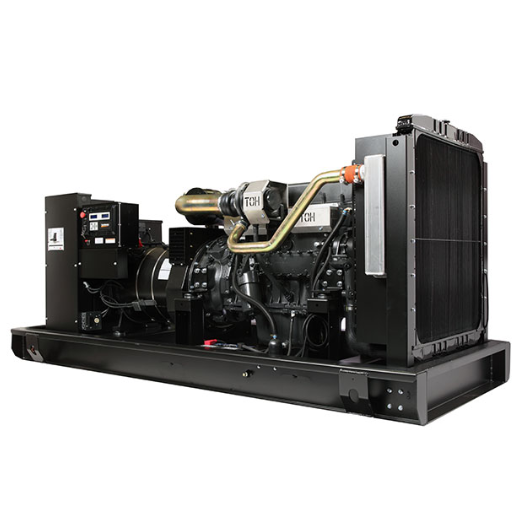
Employing a licensed technician for generator upkeep guarantees that the machinery is examined and tuned by someone who has mastered the field. Such experts can spot warning signs that an untrained eye might miss, nipping potentially expensive repairs in the bud. They work by the book, adhering to the manufacturer’s schedule so that every component, from the carburetor to the control panel, can reach its full service life. Because professionals travel with calibrated tools and advanced analyzers, most problems can be diagnosed on the spot rather than guessed at and fixed by trial-and-error.
What Are the Benefits of Expert Maintenance?
Reliable stewardship of this kind routinely boosts fuel efficiency, bolsters mechanical dependability, and keeps safety margins intact, yielding peace of mind at every power outage
When Should You Call a Technician?
An owner ought to summon a technician when the engine drags during start-up, chokes out with odd clunks, or fails to deliver its regular wattage; those clues seldom solve themselves. Routine checkpoints- never ignore warning lamps and error codes- also merit a pro visit, even if the machine otherwise hums along. Catching minor faults early almost always proves cheaper than nursing a significant breakdown, so prompt service is a business practice worth defending.
How Do Professionals Enhance the Performance of a Home Generator?
|
Key Action |
Description |
|---|---|
|
Regular Inspections |
Check for leaks, corrosion, and worn components. |
|
Oil and Filter Changes |
Replace oil and filters to ensure smooth engine operation. |
|
Air Filter Replacement |
Maintain airflow and prevent engine damage. |
|
Battery Maintenance |
Test, clean, and replace batteries as needed. |
|
Load Optimization |
Run the generator at 50-75% capacity for efficiency. |
|
Upgrade Components |
Install modern alternators or control panels for better performance. |
|
Run Periodic Tests |
Exercise the generator monthly to keep components functional. |
|
Professional Servicing |
Conduct annual checks for in-depth diagnostics and adjustments. |
|
Install Transfer Switch |
Enable automatic power transition during outages. |
|
Use High-Quality Fuel |
Prevent contamination and improve combustion efficiency. |
How Can Proper Home Generator Installation Affect Maintenance?
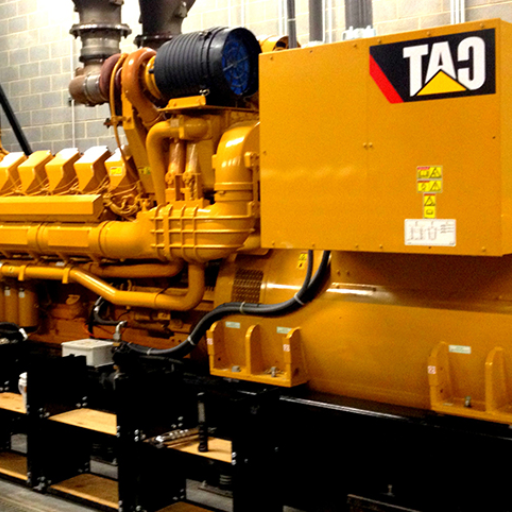
When a standby generator is installed correctly, technicians place every cable, conduit, and control panel where it will function smoothly for years. This deliberate alignment cuts premature wear, avoids fuel leaks, and stops mood-rending electrical glitches whenever the grid flickers. Inspectors appreciate the uncluttered arrangement because clear space speeds oil changes and battery swaps. Choosing a qualified installer often proves cheaper than paying for repairs caused by guesswork, and that saving arrives long before the next storm.
What Role Does the Transfer Switch Play in Maintaining Your Generator?
| Key Role | Description |
|---|---|
|
Seamless Power Transition |
Automatically switches between grid and generator power. |
|
Prevents Backfeeding |
Stops electricity from flowing into the power grid. |
|
Enhances Safety |
Protects utility workers and prevents electrical hazards. |
|
Supports Hardwired Devices |
Power appliances like water heaters and HVAC systems. |
|
Simplifies Operation |
Eliminates the need for multiple extension cords. |
|
Improves Efficiency |
Ensures the generator powers only selected circuits. |
|
Automatic or Manual Options |
Offers both automatic and manual switching mechanisms. |
|
Protects Electronics |
Prevents power surges and overloads during transitions. |
How Does Generator Installation Impact Maintenance Needs?
Generator installation is not merely a box-checking exercise; it is the hinge upon which long-term reliability swings. When the coupling and conduit work drift out of spec, key parts, including those delicate fuel lines and electrical harnesses, begin to rub, stretch, or overheat. Manufacturer field data suggests that installations with alignment errors experience nearly forty percent more premature failures. That figure makes a convincing case for sticking to the manuals and, whenever practical, summoning a certified technician.
A thoughtfully laid-out installation also carves out breathing room for the routine chores everyone eventually has to tackle. Give a mechanic room to maneuver, and tasks like oil changes or air-filter swaps slide forward quickly. A recent maintenance poll revealed that crews could finish service calls on accessible machines thirty percent quicker than those crammed into tight corners. Repeated over the unit’s life, that time saving turns into a noticeable dent in labor expenses.
Trained technicians position the transfer switch near the electrical panel and verify that every conduit is torqued to the manufacturer’s specification. A correctly aligned switch blocks utility current from mingling with generator output, a safeguard that spares the generator and sensitive electronics from ruin. When these details are finished, the backup system runs with fewer abrupt failures and shows measurably less wear across its first several seasons.
Getting the cabling, breakers, and grounding right the first time curbs emergency repairs and lets routine inspections slide into predictable openings on the calendar. The generator settles into service as a steady resource rather than an intermittent concern by capturing that efficiency.
Why Is It Important to Follow the Manufacturer’s Recommendations?
Sticking with the manufacturer’s directions for a generator is not just good practice; it’s the quickest route to trouble-free operation. Straying from the booklet invites wasted fuel, unplanned downtime, and sometimes a nasty accident. Here are five solid reasons to keep the manual within arm’s reach.
- Enhanced Performance
A piece of equipment built yesterday still runs best when fed the rules written beside it. Respect load limits, choose the right gasoline or diesel, and the engine earns the efficiency rating stamped on its side.
- Prolonged Lifespan
The recommended service intervals- space between oil changes, filter swaps, and the odd bolt tightening- aren’t optional suggestions. Treat them as timelines, not guidelines, and the machine rewards you with several extra years of reliable hum.
- Warranty Protection
Manufacturers hide subtle print in warranty papers that shrink coverage the minute operators deviate. One ignored torque spec today can flip the cost of tomorrow’s repairs from the company’s pocket to yours.
- Safety Assurance
Every cautionary note carries the weight of experience distilled from fires, shocks, and runaway blades. Following that advice keeps the worst possible surprises at bay.
- Cost-Effective Operation
Precise fuel management combined with regular upkeep according to the manufacturer’s checklist keeps day-to-day expenses in check by reducing fuel burn and sidestepping costly breakdowns.
When operators stick to those specifications, the engine delivers dependable service and protects the bottom line.
References
-
Getting serious about safety and loss prevention emergency power and standby generators – This source discusses issues related to selecting, operating, and maintaining backup generators.
-
Maintenance practices for emergency diesel generator engines onboard United States Navy Los Angeles class nuclear submarines – A thesis analyzing maintenance records for emergency diesel generators in naval submarines.
-
Use of performance-monitoring to improve reliability of emergency diesel generators – This paper explores performance monitoring, surveillance, and maintenance to enhance the reliability of emergency diesel generators.
Frequently Asked Questions (FAQ)
Q: What are the essential maintenance requirements for a home standby generator?
A: Essential maintenance requirements for a home standby generator include regular oil changes, checking the coolant levels, inspecting the fuel system for clogs, and ensuring that the fuel filter is clean. Routine generator maintenance helps prevent generator failure and keeps your generator running efficiently during power outages.
Q: How often should I perform an oil change on my emergency generator?
A: It is recommended that you check the oil level and perform an oil change on your emergency generator every 100 hours of operation or at least once a year, whichever comes first. Regular oil checks ensure that your generator runs smoothly and help prevent engine corrosion.
Q: What is involved in the annual maintenance of a backup power generator?
A: Annual maintenance of a backup power generator involves a comprehensive generator checklist, including checking the oil, inspecting the fuel system, testing the battery, examining the electrical connections, and ensuring the generator size is suitable for your needs. This helps keep your generator in peak condition and reliable during emergencies.
Q: Why is it essential to have a maintenance plan for a standby generator?
A: A maintenance plan for a standby generator is crucial to prevent unexpected generator failure and ensure it operates efficiently during power outages. Regular maintenance visits by generator experts can help detect potential issues early and extend the lifespan of your generator.
Q: How can I prevent corrosion in my diesel generator?
A: To prevent corrosion in your diesel generator, it is essential to keep the generator clean and dry, regularly inspect and clean the fuel system, and ensure no moisture build-up. Using corrosion inhibitors and performing regular maintenance for standby generators can also help mitigate corrosion.
Q: What role does generator size play in its maintenance requirements?
A: The generator size affects maintenance requirements, as larger generators may have more complex systems requiring detailed inspections and servicing. It is essential to ensure the generator size is appropriate for your power needs to prevent overloading and reduce maintenance issues.
Q: How frequently should I schedule maintenance visits for my Kohler portable generator?
A: For a Kohler portable generator, it is recommended to schedule maintenance visits at least once a year or after every 200 hours of use, whichever comes first. Regular maintenance helps ensure the generator’s reliability and efficiency during power outages.
Q: What should I look for when checking the oil in your generator?
A: When checking the oil in your generator, ensure the oil level is between the minimum and maximum marks on the dipstick. Look for any signs of dirt or metal particles indicating engine wear. Regular oil checks are crucial to keep your generator running smoothly.
Q: How can routine generator maintenance prevent generator failure?
A: Routine generator maintenance can prevent generator failure by addressing potential issues such as clogged fuel filters, low oil levels, and corroded components before they lead to significant problems. Regular inspections and servicing help maintain the generator in peak condition, reducing the risk of failure during critical times.







